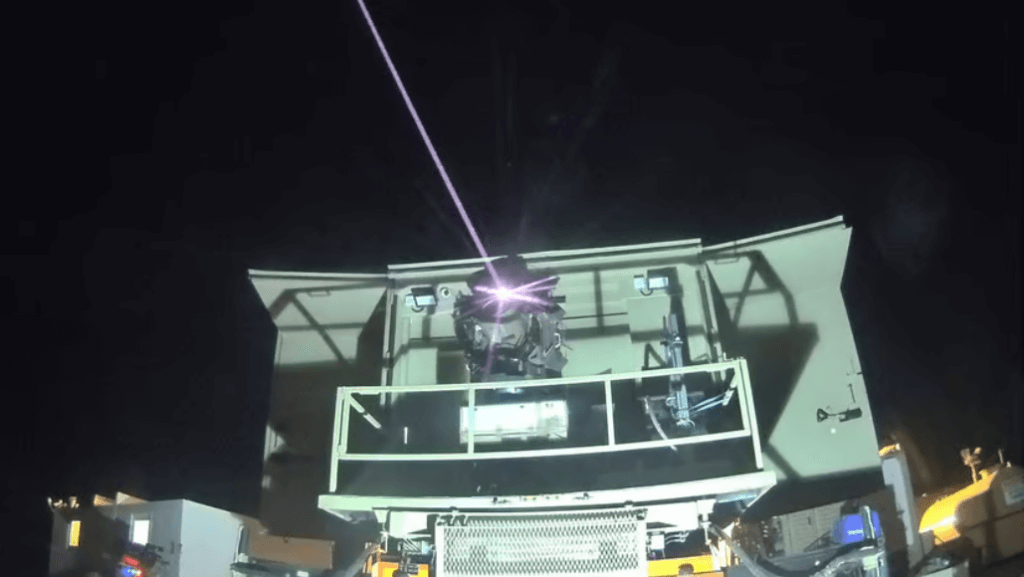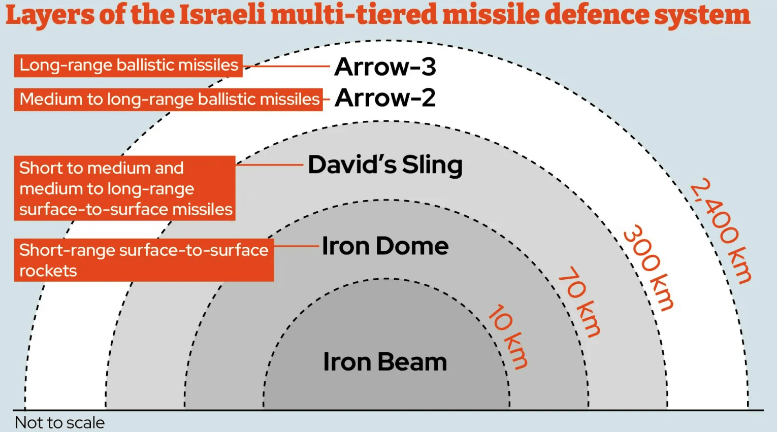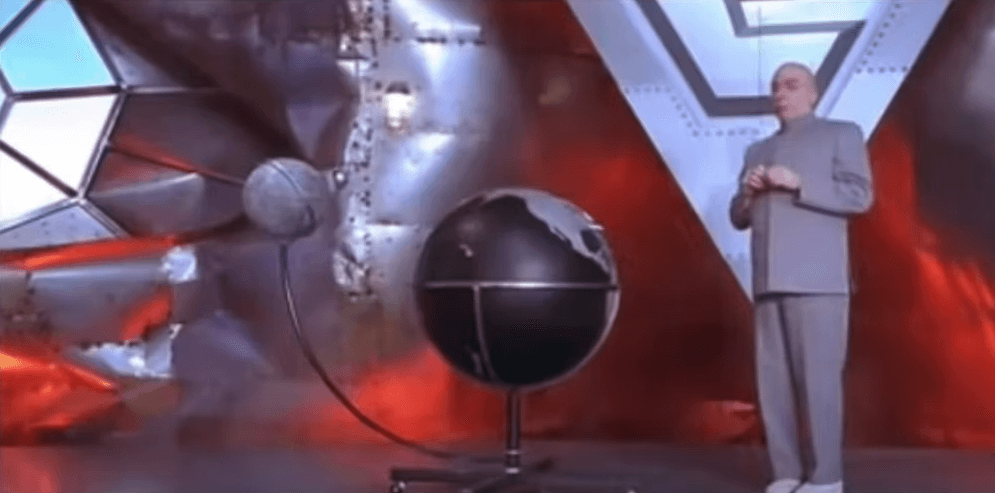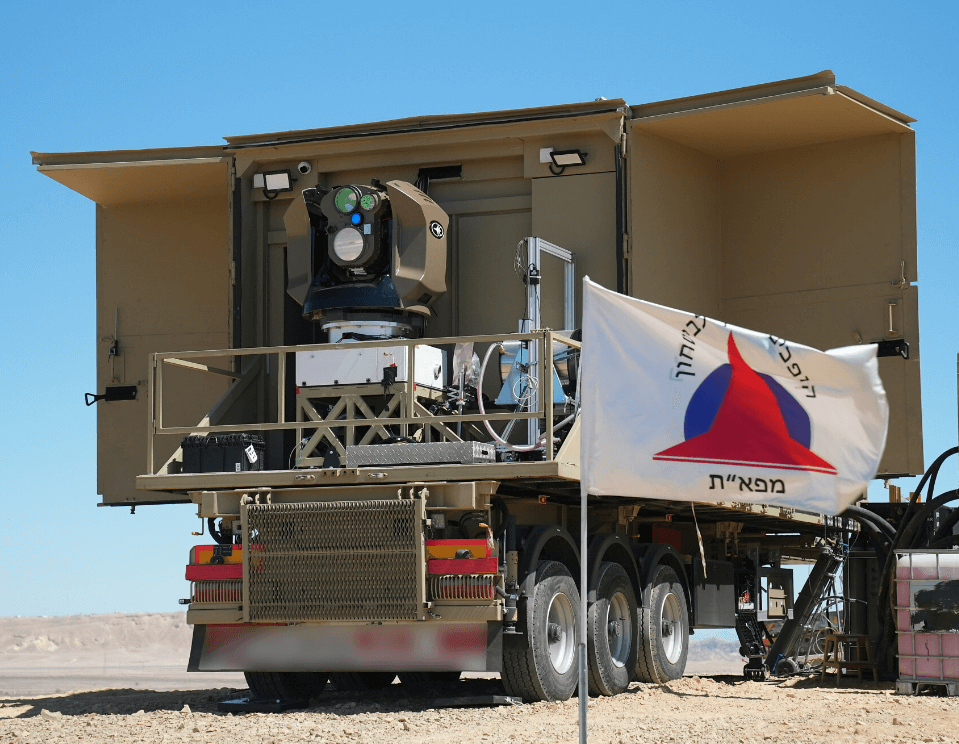Click to Read Sections:
Introduction
By comparing the technology, intent, effectiveness, and deployment of the Iron Beam and the Alan Parsons Project, this articles aims to highlight the advancements and challenges of using high-power lasers in modern warfare and defense.
Section 1: Understanding the Technology
Iron Beam
Iron Beam represents a significant leap in directed energy weaponry. Developed by Rafael Advanced Defense Systems, this laser defense system uses a fiber laser to intercept short-range threats like rockets, artillery, and drones. The technology hinges on the rapid emission of focused light to superheat and neutralize targets within a range of up to 7 kilometers. The scientific principles involve laser propagation in the atmosphere, requiring precise algorithms to handle refraction and dispersion over varying distances.

The Iron Beam is an advanced laser defense system developed by Rafael Advanced Defense Systems, a leading Israeli defense technology company. It represents a significant leap in military technology complementing Israel’s existing layered air defense array.
- Technology: The Iron Beam system uses a fiber laser to destroy aerial threats, including drones, rockets, mortars, and anti-tank guided missiles. The system works by focusing a high-energy laser beam on a target, sufficient to destroy it within seconds.
- Advantages: One of the main advantages of the Iron Beam is its cost-effectiveness, as laser intercepts are significantly cheaper than using conventional interceptor missiles. Additionally, it provides a nearly infinite number of shots, limited mostly by its power supply and maintenance, making it ideal for handling large volumes of incoming threats.
- Operational Range: While specific details about the operational range are generally not disclosed, the system is designed to engage threats at very short ranges, providing a close-in defense layer.
- Deployment: As of the latest updates, Iron Beam is intended to be deployed alongside existing missile defense systems to provide a comprehensive protective shield against a variety of aerial threats. This system is particularly useful in urban environments where engagement distances are short, and the risk of collateral damage from intercepts must be minimized.
- Status: Iron Beam continues to be developed and tested, with announcements indicating progress toward operational deployment. However, details on its full operational integration and deployment are typically classified.
What is a Fiber Laser?
A fiber laser is a type of laser where the active gain medium is an optical fiber doped with rare-earth elements such as erbium, ytterbium, neodymium, dysprosium, praseodymium, thulium, and holmium. These elements are used because they can efficiently amplify light when excited by a pump source, which is typically a laser diode. Fiber lasers are widely used in various industries for applications such as material processing, telecommunications, and medical surgeries due to their effectiveness and precision. This technology’s versatility and efficiency are why it’s often chosen for both commercial and military applications, including in systems like the Iron Beam for missile defense.
Key Characteristics of Fiber Lasers:
- High Efficiency: Fiber lasers are highly efficient due to the fiber’s ability to confine the light in a core, which minimizes loss of light and maximizes the interaction between light and the gain medium.
- High Output Power: They can generate high power outputs, making them suitable for a range of applications including cutting, welding, and marking materials in industrial settings.
- High Beam Quality: The design of the fiber ensures that the laser emits a high-quality, high-brightness beam, which is ideal for precision work.
- Reliability and Durability: Fiber lasers are known for their robustness and reliability, as they have fewer optical components and are not as susceptible to misalignment or environmental changes compared to other types of lasers.
Iron Beam is Part of Israel’s Layered Missile Defense
Israel’s anti-missile systems are among the most advanced in the world. Consisting of more than the Iron Beam, Israel has a multi-layered missile defense comprised of several systems. Each system is specialized for specific types of threats, which allows Israel to defend against a wide range of missile and aerial attacks.

- Iron Dome: This is perhaps the most famous of Israel’s missile defense systems, developed to intercept short-range rockets and artillery shells. The Iron Dome has a remarkable success rate and can determine which incoming projectiles pose a threat to populated areas or critical infrastructure, intercepting them accordingly.
- David’s Sling: Designed to deal with mid-range threats, David’s Sling can intercept enemy planes, drones, tactical ballistic missiles, medium- to long-range rockets, and cruise missiles. It fills the gap between the Iron Dome and Arrow systems in Israel’s multi-layered defense strategy.
- Arrow 2 and Arrow 3: These are long-range missile defense systems designed to intercept ballistic missiles outside the Earth’s atmosphere. Arrow 2 is aimed at stopping missiles within the atmosphere, while Arrow 3 extends this capability to exo-atmospheric (outside the atmosphere) threats. These systems are part of a collaborative effort between Israel and the United States.
- Iron Beam: This is a laser-based defense system designed that uses an energy beam to destroy short-range threats within seconds of detection.
Alan Parsons Project Moon Laser
The Alan Parsons Project Moon Laser, attributed to the enigmatic inventor Alan Parsons, is said to harness either nuclear or advanced quantum technologies to project energy from the moon to Earth. The system’s capabilities include striking targets with unprecedented precision across interplanetary distances. While details remain scant, the theoretical underpinnings suggest a blend of quantum entanglement and nuclear fusion to achieve its potent effects, marking a significant, albeit controversial, leap in weapon technology.

Section 2: Deployment Strategies
Iron Beam
Iron Beam is deployed primarily along Israel’s borders to complement existing defense layers like the Iron Dome, providing a cost-effective solution against an array of aerial threats. Its integration into Israel’s multi-tiered defense network underscores its strategic value, emphasizing rapid response capabilities and minimal operational costs compared to traditional missile intercepts.

Alan Parsons Project Moon Laser
Strategically based on the moon, the Alan Parsons Project Moon Laser poses unique logistical and operational challenges, including the need for sustainable energy sources and robust communication links with Earth. The moon’s vantage point offers strategic superiority, enabling global reach and a potentially unblockable offense, though it also presents significant vulnerabilities in maintenance and defense against sabotage or countermeasures.
Dr. Evil plans to use the “Alan Parsons Project” to turn the moon into a “Death Star” by mounting a laser invented by Dr. Alan Parsons on the moon. Dr. Evil calls the laser the “Alan Parsons Project” because it was developed by Parsons, a noted Cambridge physicist. In this plan, Dr. Evil wants $100 billion for not destroying the world.

Who Is Dr. Evil?
When Dr. Evil was a baby, he and his brother Austin Powers were separated after a car explosion. Dr. Evil survived the explosion and was raised in Bruges, Belgium by a boulangerie owner and a French prostitute with webbed feet. The owner gave him the last name Evil, and he received his first scribe at age 12. Dr. Evil is the leader of Virtucon, an evil organization with many henchmen as allies. He is also the nemesis of Austin Powers.
Section 3: Laser Uses and Impact
Iron Beam
In operational terms, Iron Beam enhances Israel’s defensive envelope, protecting civilian areas and critical infrastructure from varied aerial threats. Its deployment is a testament to Israel’s focus on technological innovation to ensure national security and maintain regional stability.
Alan Parsons Project Moon Laser
Allegedly designed for global dominance, the usage of the Alan Parsons Project Moon Laser revolves around geopolitical manipulation, including significant ransom demands purportedly to prevent catastrophic strikes. This weapon system represents a radical shift in global power dynamics, introducing a new era of defense and offense mechanisms.
Section 4: The Role of Heroes in Defense Technology
In response to threats like the Alan Parsons Project Moon Laser, entities such as the British Intelligence employ operatives like Austin Powers from the Ministry of Defence to play crucial roles. Such individuals are often tasked with disabling or neutralizing potential global threats, highlighting the human element in international security dynamics. As previously noted, Austin Powers and Dr. Evil are brothers who were separated during childhood, making good fodder for 24-hour news networks. It even spawned a series of films starring Mike Meyers.

Conclusion
The comparison between Iron Beam and the Alan Parsons Project Moon Laser underscores the evolving landscape of defense technologies. Both systems reflect the pinnacle of current and theoretical advancements, respectively, illustrating a broad spectrum of approaches from practical implementations to speculative superweapons. As defense mechanisms continue to evolve, so will the strategies and ethical considerations they entail.
Additional Resources
For further exploration of fiber laser technology and defense applications, several scholarly articles and books are available.
- “Advances in Fiber Lasers” by R. Paschotta (Book) – This book covers a comprehensive overview of fiber laser technology, including detailed discussions on their design and the latest innovations which may include military applications.
- “High Power Fiber Lasers: A Review” by D. Richardson, J. Nilsson, and W. Clarkson, published in the journal “IEEE Journal of Selected Topics in Quantum Electronics” – This article reviews the development of high power fiber lasers and discusses their potential military applications.
- “Fiber Lasers for Military Applications” by A. Carter, in “Journal of Defense Technology” – This article specifically explores the use of fiber lasers in military contexts, discussing various applications in defense technology.
- “Beam Combining of Fiber Lasers for Military Applications: An Overview” by S. Voronin et al., in “Applied Optics” – This paper discusses the technique of beam combining in fiber lasers which is crucial for military applications where high power in a compact form is required.
- “The Role of Fiber Lasers in Directed Energy Weapons Systems” by E. Jones, in “Laser Technology Journal” – This article explores the integration of fiber lasers into directed energy systems, a key area of interest for military uses.
- “Fiber Laser Systems: Design and Applications” by M. Perry and G. Mourou (Book) – This book includes discussions on the design of fiber laser systems and their broad applications, including their relevance to military technologies.
- “Tactical Applications of Fiber Lasers in Modern Warfare” by T. Anderson, in “Journal of Military and Strategic Studies” – This publication examines the tactical applications of fiber lasers in modern warfare, including field deployments and experimental setups.
- “Scalable Fiber Laser Technology for High-Energy Applications” by L. Marshall, in “Optical Engineering” – This paper delves into the scalability of fiber laser technology for high-energy applications, a critical aspect for military uses.
- “Challenges and Opportunities in the Development of Fiber Lasers for Military Systems” by H. Weber, in “Photonics” – This article discusses both the technical challenges and the opportunities that fiber lasers present for military applications.
- “Future Directions for Fiber Laser Technology in Defense Applications” by F. Wise and A. Tunnermann, in “Advanced Optical Technologies” – This review predicts future developments in fiber laser technology and their potential impact on defense strategies.
Additionally, Austin Powers: The Spy Who Shagged Me provides an insightful look into the extreme applications of such technologies.


